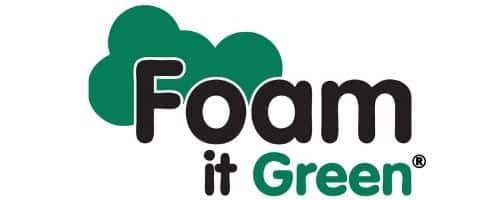
Fast Rise Vs. Slow Rise Foam
One of the options you may have available to you for your project is “slow rise” foam. You may notice that there is not an option to select “fast rise” foam, and that’s because fast rising foam is standard. As the names imply, the difference between these two formulations is how long
the foam will take to expand and cure. They are not interchangeable among project types, so let’s dive into which one is best for specific applications.
Fast Rise Foam
Fast rise foam is meant to be sprayed to an open cavity where it will bond and expand in a short period of time, curing quickly enough to avoid sagging or settling. This is the most commonly used foam because it can be applied in any direction: overhead, downward, or horizontally into an open wall cavity. There are different densities available for fast rise foam including high density (2.8 pounds per cubic foot), standard density (1.75 pounds per cubic foot), and low density (.75 pounds per cubic foot). For most projects, the standard density fast rise foam will be used because its closed cell structure will stop air, moisture, and provide a high R value of approx. 7 per inch. Foam it Green standard density fast rising foam, such as in our Foam it 602 and Foam it 202 kits, takes it a step further, giving you Class 1 ASTM E84 Fire-retardant and ASTM G21 Anti-microbial foam. CAUTION: Foam it Green only provides Class 1 fire-retardant foam in our fast rise standard density kits, but many other suppliers still offer Class 2 foam. Beware of lower priced foam that may not be as safe for your project as Foam it Green! When spraying fast rise Foam it Green, it’s best to target an application thickness of 1/3” wet so that it can expand to 1” cured. If you need additional thickness, spray in 1” cured layers. When the two components mix, they create heat which helps the foam expand. This process usually takes 30 seconds, and your foam should be tack free in 2 minutes! Spraying too thick can make the foam heat up more, cure prematurely, and cost the user coverage.
Slow Rise Foam
Slow rise foam is meant to be sprayed into an enclosed cavity, where the expansion will be delayed, allowing it to travel more thoroughly to where it needs to go, filling in all the gaps you can’t see. Slow rise Foam it Green is also Class 1 ASTM E84 Fire-retardant insulation, just like our fast rising formula! Since you cannot see how much the foam will rise in an enclosed cavity, which ends up being approximately 6 times its liquid volume, we recommend you go slow and check your work often. Some customers have had success attaching clear vinyl tubing over the mixing nozzle so that #1) it can be “fed” into the area to be filled and #2) you can see what’s going in is green in color to help you know your mix is “on-ratio”. Slow rise foam is best installed into an empty cavity without any prior insulation still there. If you have old fiberglass batts, it’s best to either create an opening large enough to remove all of them, or remove the drywall/plaster completely and switch to fast rise foam for an open cavity spray.
Lastly, since the estimated coverage with slow rise foam is based on “free rise”, you should estimate a bit more waste than you would with fast rise foam. Some of the slow rise foam might be held back from fully expanding, being trapped by the structure of the cavity or even other areas of already cured foam. In addition, since you cannot control the thickness of the spray with slow rise – the entire void must be filled. In a 2×4 wall construction, this means you will have about 3.5” of closed cell foam, which offers a tremendous R value, but at a higher per square foot cost. Alternatively, fast rise foam thickness can be controlled, and in many areas 2” of closed cell foam is sufficient.
.
When in Doubt Contact Us!
Most projects are best suited to be attacked with closed cell foam. While it is initially more expensive, that increase in density will reward you with more structural stability, a higher R value, and moisture stopping power.
Still have questions about which foam might be best for your project? Just give us a call so we can have a project expert walk you through it – 1-833-FOAM-IT-G
.
